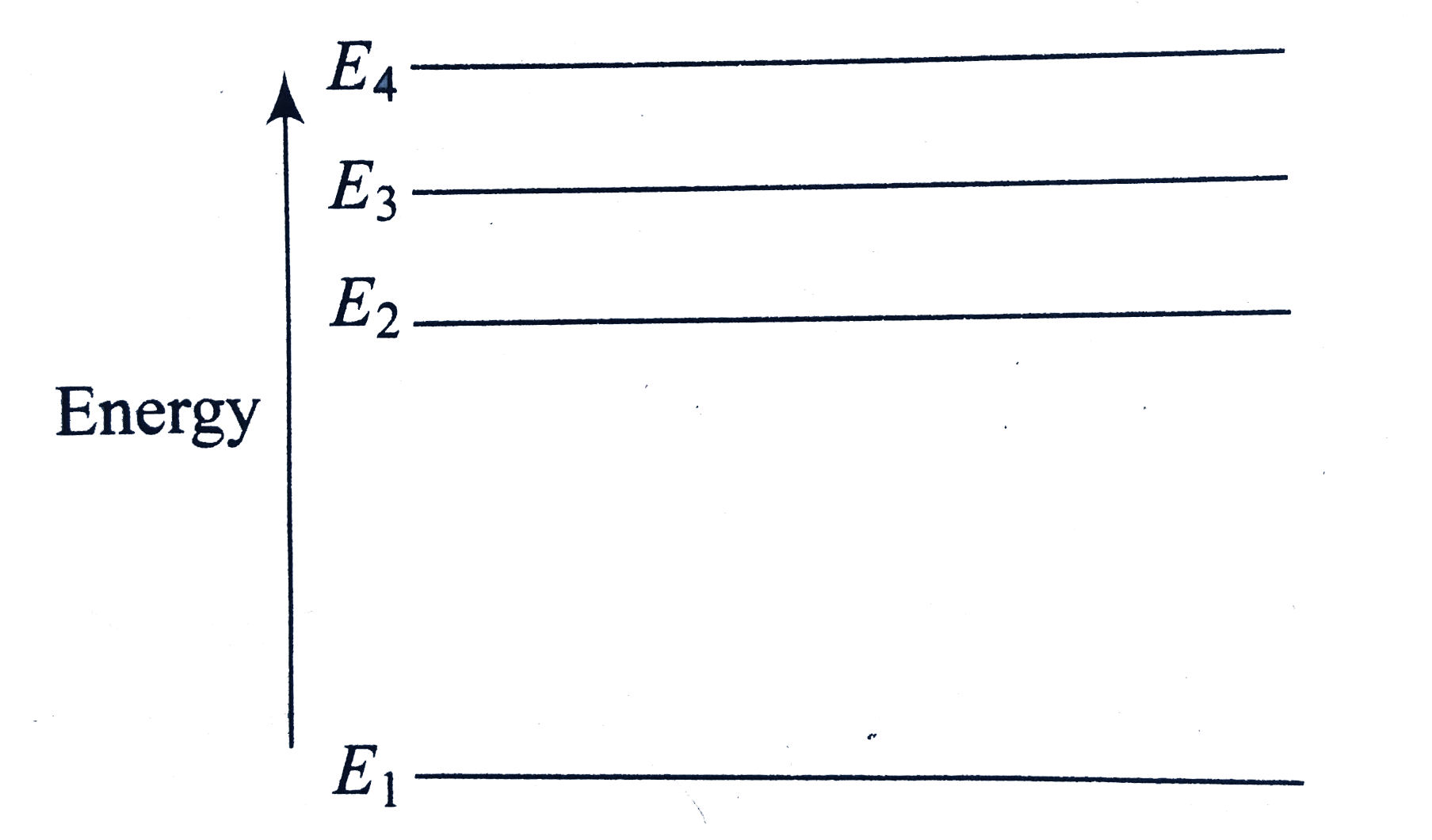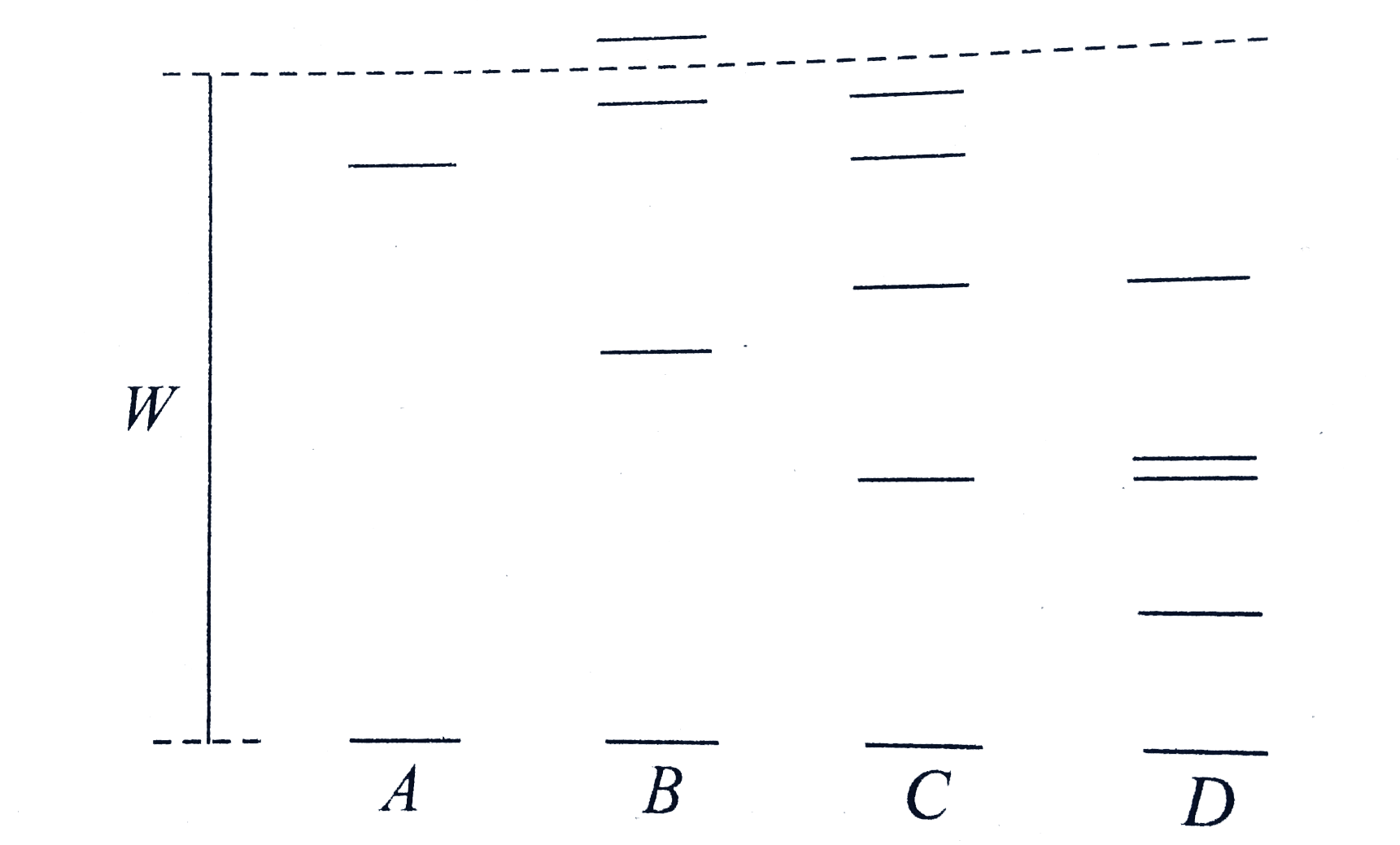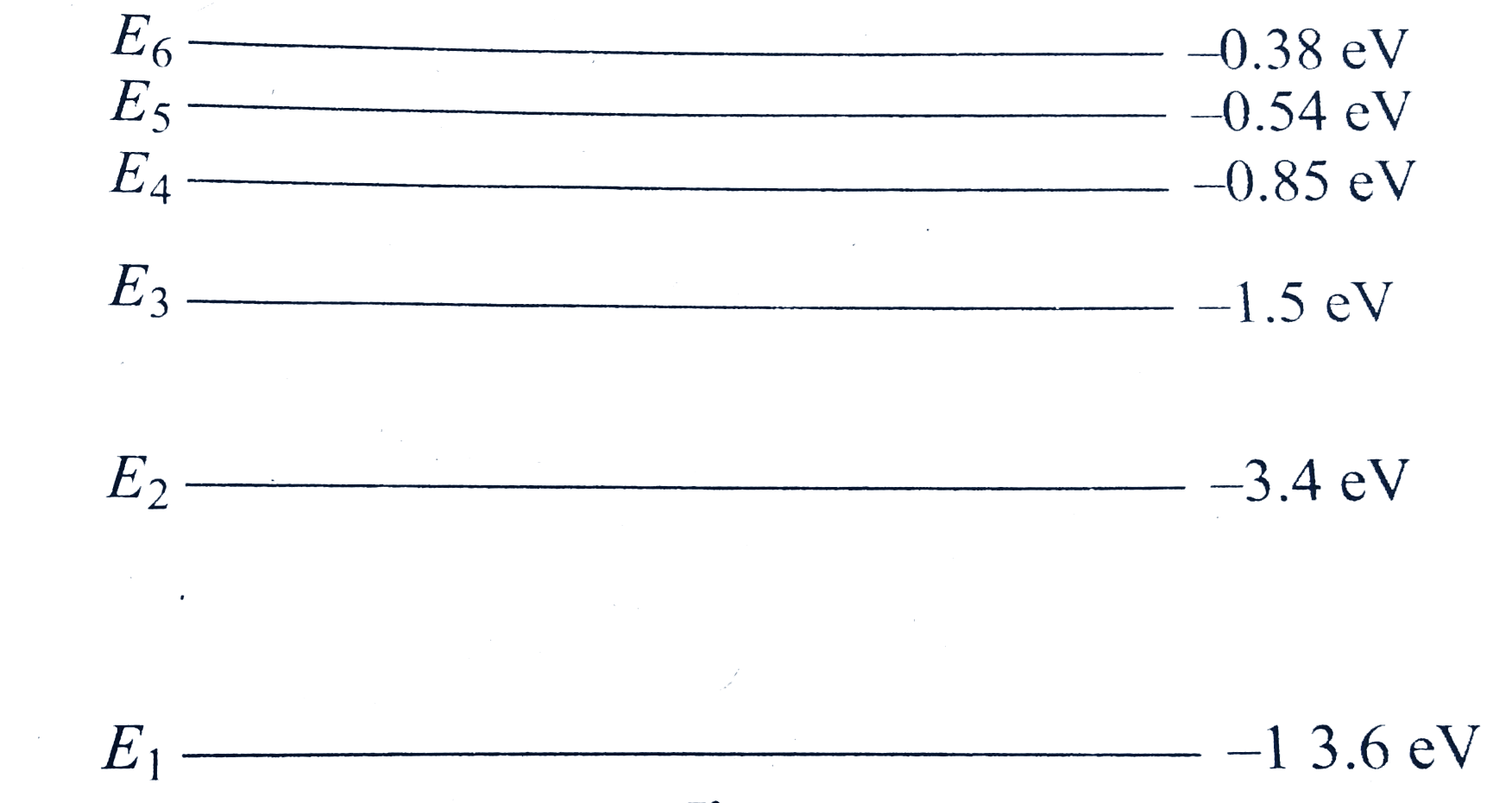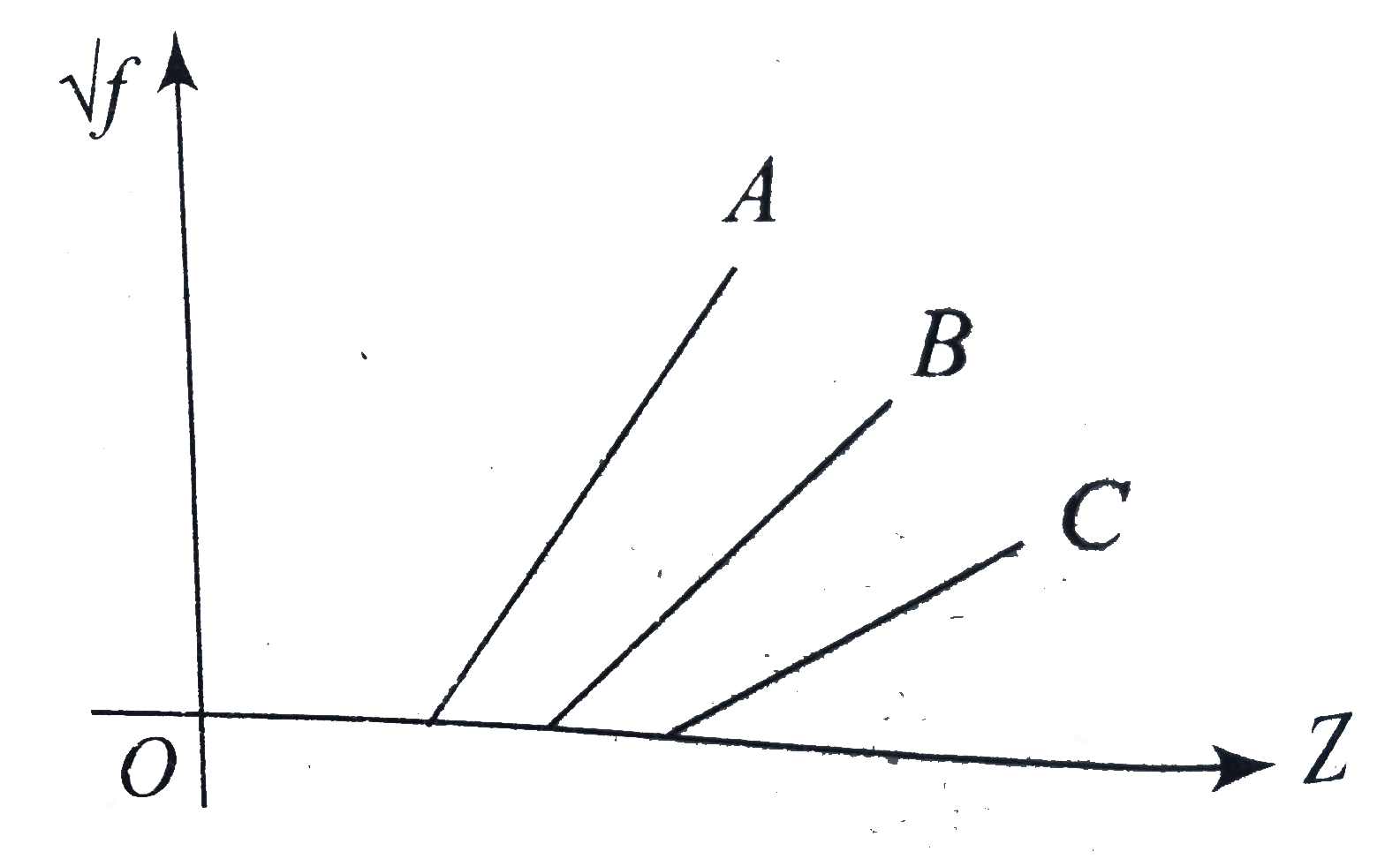Single Correct from CENGAGE PHYSICS Chapter 3 ATOMIC PHYSICS for Class 12
| Class 12 | PHYSICS |
| Chapter | ATOMIC PHYSICS |
| CENGAGE PHYSICS | Single Correct |
| Medium | English |
| Academic Year | 2023-2024 |
Question 10
Figure shown five energy levels of an atom , one being much lower than the other four. Five transitios between the levels are idicated, each of which produces a photon of definite energy and frequency.
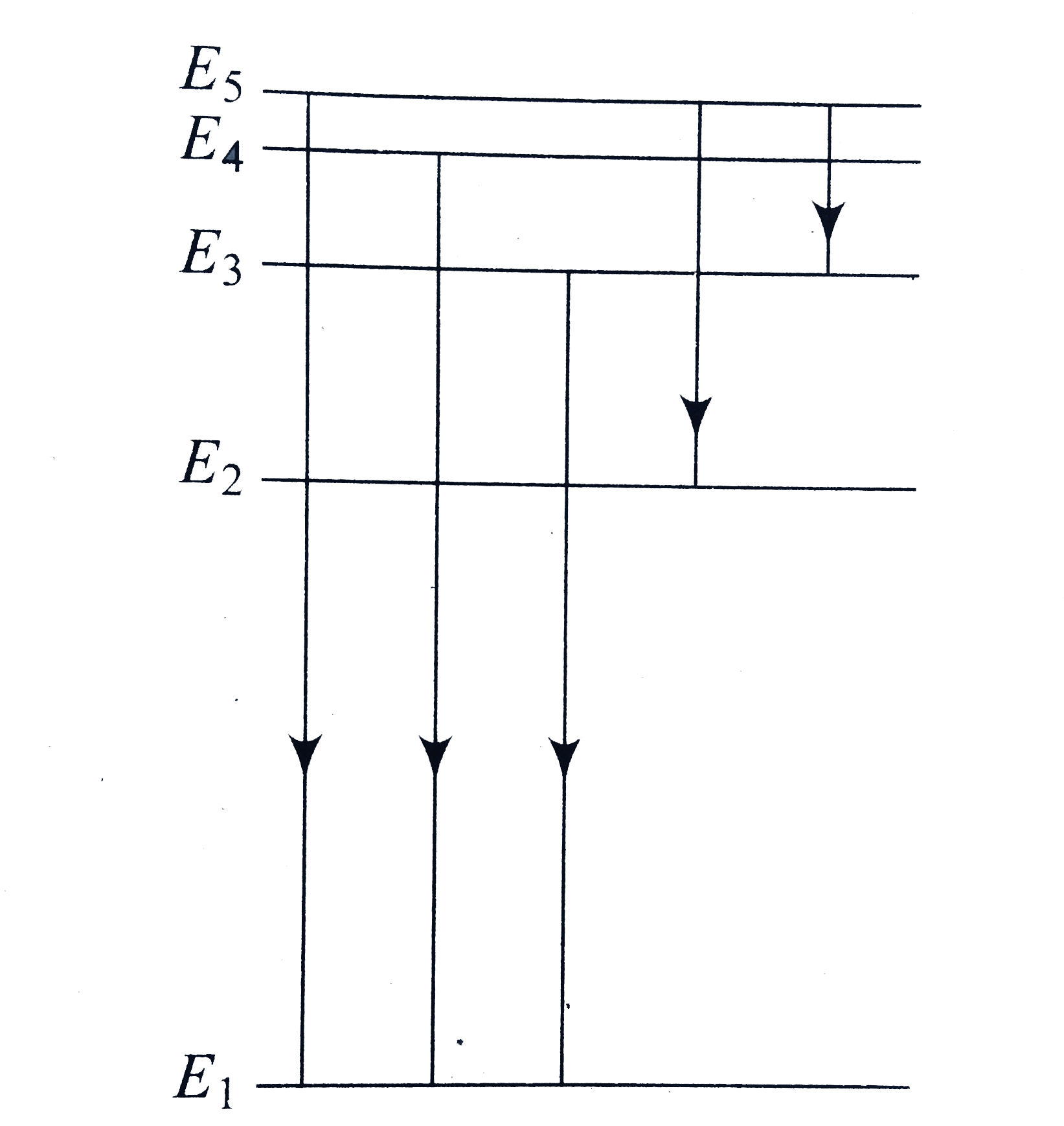 Which one of the spectrum below best corresponding to the set of transition indicated?View Solution
Which one of the spectrum below best corresponding to the set of transition indicated?View SolutionQuestion 15
Check the corretness of the following statement about the Bohr model of hydrogen atom:
(i) The acceleration of the electron in n=2 orbit is more than that in n=1 orbit.
(ii) The angular momentum of the electron in n=2 orbit is more than that in n=1 orbit.
(iii) The KE of the electron in n=2 orbit is more than that in n=1 orbit. View SolutionQuestion 19
Which of the following statement is true regarding Bohr's model of hydrogen atom ?
(I) Orbiting speed of electrons decreases as if falls to discrete orbits away from the nuclues.
(II) Radii of allowed orbits of electrons are proportional to the principle quantum number.
(III) Frequency with which electrons orbit around the nucleus in discrete orbits is inversely proportional to the principle quantum number.
(IV) Binding froce with which the elctron is bound to the nuclues increases as it shifts to outer orbits.
Selected the correct answer using the codes given below: View SolutionQuestion 20
In the Bohr model of a hydrogen atom, the centripetal force is furnished by the Coulomb attraction between the proton and the electrons. If a0 is the radius of the ground state orbit, m is the mass and e is the charge on the electron and e0 is the vacuum permittivity, the speed of the electron is View SolutionQuestion 59
The electron in a hydrogen atom make a transtion n1→n2 where n1andn2 are the priocipal quantum number of the two states . Assume the Bohr model to be valid . The time period of the electron in the initial state is eight time that in the final state . The possible values of n1andn2 are View SolutionQuestion 74
Imagine an atom made up of a proton and a hypothetical particle of double the mass of the electron but having the same charge as the electron . Apply the Bohr atom model and consider all possible transitions of this hypothetical particle that will be emitted level . The longest wavelength photon that will be emitted has longest wavelength λ (given in terms of the Rydberg constant R for the hydrogen atom) equal to View SolutionQuestion 78
The electron in a hydrogen atom make a transtion n1→n2 where n1andn2 are the priocipal quantum number of the two states . Assume the Bohr model to be valid . The time period of the electron in the initial state is eight time that in the final state . The possible values of n1andn2 are View SolutionQuestion 80
A photon collides with a stationary hydrogen atom in ground state inelastically. Energy of the colliding photon is 10.2 eV. After a time interval of the order of micro second another photon collides with same hydrogen atom inelastically with an energy of 15eV. What will be observed by the detector?View SolutionQuestion 89
Two hydrogen atoms are in excited state with electrons inn=2 state.First one is moving to wards left and emits a photon.' of energy E1 towards right. Second one is moving towards right with same speed and emits a photon of energy E2 towards right. Taking recoil of nucleus.into account during_emission process :View SolutionQuestion 102
A hydrogen like atom (atomic number Z) is in a higher excited state of quantum number n. The excited atom can make a transition to the first excited state by successively emitting two photons of energy 10.2 eV and 17.0 eV, respectively. Alternatively, the atom from the same excited state can make a transition to the second excited state by successively emitting two photons of energies 4.25 eV and 5.95 eV, respectively Determine the values of n and Z. (lonization energy of H-atom = 13.6 eV) View SolutionQuestion 104
A sample of hydrogen atom is in excited state (all the atoms ). The photons emitted from this sample are made to pass through a filter through which light having wavelength greater than 800nm can only pass. Only one type of photons are found to pass the filter. The sample's excited state initially is [Takehc=1240eV−nm, ground state energy of hydrogen atom =−13.6eV]. View SolutionQuestion 107
Electron in a hydrogen-like atom (Z=3) make transition from the forth excited state to the third excited state and from the third excited state to the second excited state. The resulting radiations are incident potential for photoelectrons ejested by shorter wavelength is 3.95eV.
Calculate the work function of the metal and stopping potiential for the photoelectrons ejected by the longer wavelength.View SolutionQuestion 122
In order to determine the value of E0, a scienctist shines photons (''light particles '')of various energies at a cloud of atomic hydrogen. Most of the hydrogen atom occupy transition through that cloud : see figure is a graph of part of the scientist's data, showing the idensity of the transmitted light as a function of the photon energy. A hydrogen atom's electron is likely to obsorb a photon only if the photon gives the electron enough energy to knock it into a higher shell.

According to this experiment , what is the approximate value of E0?View SolutionQuestion 139
When photon of wavelength λ1 are incident on an isolated shere supended by an insulated , the corresponding stopping potential is found to be V. When photon of wavelength λ2 are used , the orresponding stopping potential was thrice the above value. If light of wavelength λ3 is used , carculate the stopping potential for this case.View SolutionQuestion 161
X-ray emitted from a copper target and a molybdenum target are found to contains a line of wavelength 22.85nm attributed to the Kα line of an impurity element . The Kα line of copper (Z=29) and molybdenum (Z=42) have wavelength 15.42nmand7.12nm, respectively. The atomic number of the impurity element isView SolutionQuestion 163
In the Bohr model of a π−mesic atom , a π−mesic of mass mπ and of the same charge as the electron is in a circular orbit of ratio of radius r about the nucleus with an orbital angular momentum h/2π. If the radius of a nucleus of atomic number Z is given by R=1.6×10−15Z13m, then the limit on Z for which (ε0h2/πme2=0.53Åandmπ/me=264)π−mesic atoms might exist isView SolutionQuestion 167
Energy liberated in the de-excitation of hydrogen atom from the third level falls on a photo-cathode. Later when the same hoto-cathode is expoced to a spectrum of some unknown - like gas, excited to the second energy level , it is found that the de Broglie wavelength of the fastest photoelectrons now ejected has decreased by a factor of 3. For this new gas, difference of energies of the second Lyman line and the first balmer line is found to be 3 times the ionization potential of the hydrogen atom. Select the correct statement (s):View SolutionQuestion 185
Suppose frequency of emitted photon is f0 when the electron of a stationary hydrogen atom jumps from a higher state m to a lower state n. If the atom is moving with a velocity v(<<c) and emits a photon of frequency f during the same transition, then which of the following statement are possible?View Solution
